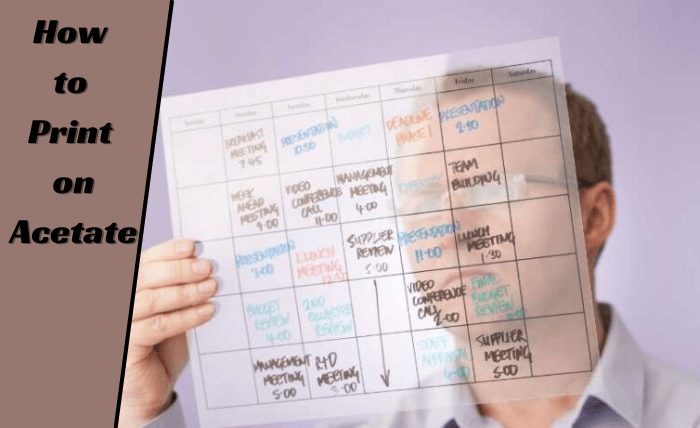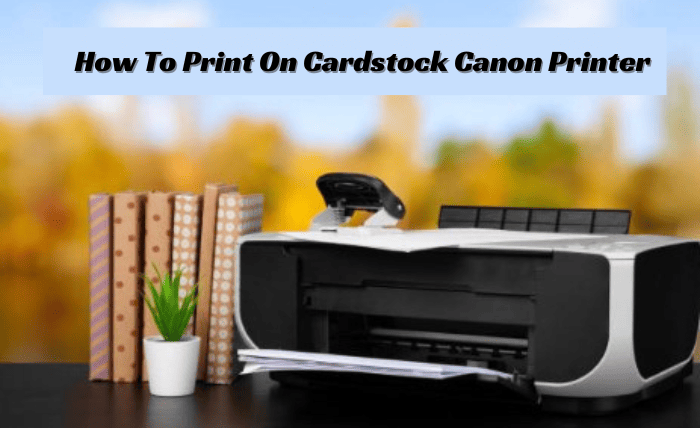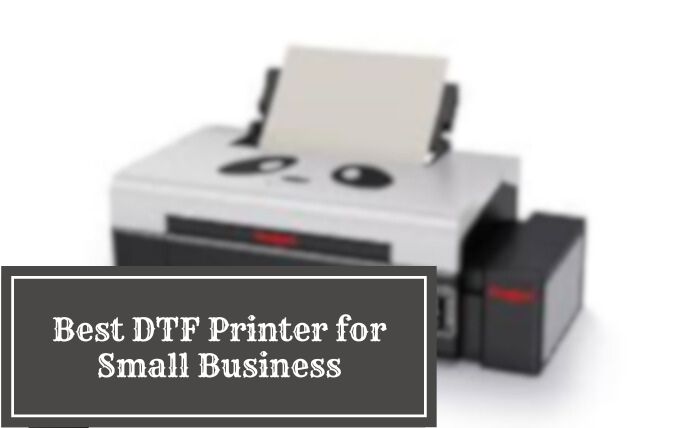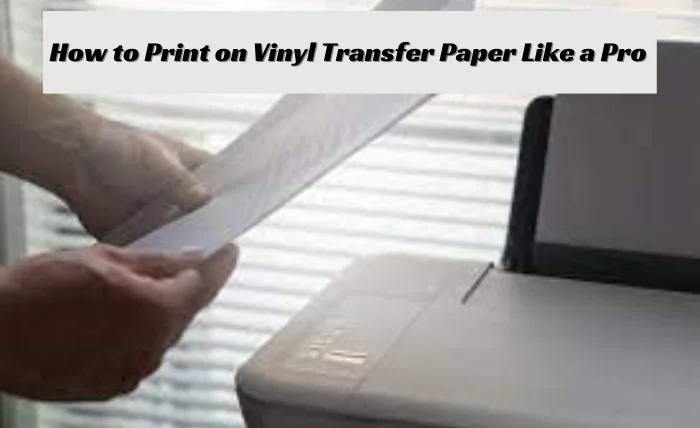Printing on acetate sheets transforms ordinary projects into stunning visual masterpieces! This guide will unveil the secrets of print on acetate, a technique that brings a professional touch to your presentations, artwork, and crafts. Whether a creative enthusiast or a business professional, mastering this skill can elevate your projects.
Get ready to explore the straightforward steps and tips that make printing on acetate not just possible but also incredibly rewarding. Let’s drop in and unleash your creative potential.
Print on Acetate: A Beginner’s Guide
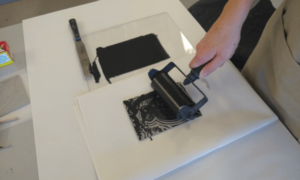
Printing on acetate sheets offers unique benefits for both professional and DIY projects. This guide provides basic strategies and insights into using acetate effectively.
What is Acetate?
Acetate is a clear, plastic-like material known for its transparency and flexibility. It is durable and resistant to ink smudging, making it ideal for high-quality printing.
Types of Acetate Sheets Available in the Market
Acetate sheets come in various thicknesses and sizes. Some are designed for inkjet printers, while others work better with laser printers. Choosing the right type is crucial for your project.
Applications of Acetate in Printing
Various Uses in Both Professional and DIY Projects Acetate is widely used in professional settings for overlays, architecture, and graphic design. In DIY projects, it’s popular for crafts, greeting cards, and photo prints.
Benefits of Using Acetate for Printing
Acetate sheets offer a glossy finish, enhancing the visual quality of prints. They are also waterproof and tear-resistant, ensuring the longevity and durability of the printed material.
Mastering Acetate Printing: Essential Preparation Steps
Printing on acetate requires careful preparation. This guide covers choosing the right materials and setting up your workspace.
Choosing the Right Acetate Sheets
The key to successful acetate printing lies in choosing the right sheets. For inkjet printers, use acetate specifically labeled for inkjet use. For laser printers, select acetate that can withstand high heat.
Matching Acetate to Printer Specifications
Check your printer’s manual. Some printers need acetate sheets with a special coating. This coating helps the ink or toner adhere properly.
Consider Thickness and Size
Acetate sheets vary in thickness and size. Thicker sheets are more durable but may only feed well in some printers. Ensure the size matches your printer’s capabilities.
Necessary Supplies and Setup
You will need a compatible printer, the right acetate sheets, and appropriate software for design. Ensure you have these before starting.
Setting Up Your Workspace
Choose a clean, dust-free area for printing. Dust can affect print quality on acetate. Ensure your printer is on a stable surface. This prevents misalignment during printing.
Software and Design Preparation
Use software that supports high-resolution printing. Prepare your design in the correct format and resolution for the best results.
Printer Settings Adjustment
Adjust your printer settings for acetate. This usually involves selecting a heavy paper or specialty media mode. Check your printer’s manual for specific instructions.
Effortless Acetate Printing: A Step-by-Step Guide
Printing on acetate can be simple with the right approach. This guide walks you through designing your document, adjusting printer settings, and the printing process.
Designing Your Document
Tips for Designing Printables for Acetate Sheets
When designing for acetate, use bold, dark colors for clarity. Light or pastel colors may show up poorly. Keep designs simple, as intricate details can blur.
Software Recommendations
Use graphic design software like Adobe Photoshop or Illustrator. These programs offer high-resolution output. Free alternatives like GIMP or Canva also work well.
Consider Transparency in Design
Remember, acetate is transparent. Designs should account for this. Avoid heavy backgrounds that can make the transparency less effective.
Test Print on Paper First
Always do a test print on regular paper. This helps check the design’s look and ink coverage before using acetate sheets.
Printer Settings and Adjustments
Set your printer to a high-quality mode. Choose settings for heavy paper or specialty media if available. This ensures proper ink application.
Handling Acetate Sheets in the Printer
Feed acetate sheets one at a time to avoid jams. Make sure the printable side is facing the right direction. Check your printer’s manual for specific instructions.
Avoiding Smudging
Let the printed acetate dry completely before handling. This prevents smudging and ensures clear prints.
Printer Maintenance
Clean your printer’s rollers regularly. Dust and debris can cause feeding issues with acetate sheets.
Printing Process
Step-by-Step Instructions for Printing
- Load the acetate sheet correctly.
- Select the right printer settings.
- Print your design.
- Allow the paint to dry completely.
Troubleshooting Common Issues
If the ink smudges, increase the drying time. For feeding issues, clean the printer’s rollers. Ensure the acetate is flat and not curled at the edges.
Perfecting Acetate Prints: Essential Post-Printing Tips
After printing on acetate, proper handling and finishing are crucial. This section covers best practices for drying and preserving your acetate prints.
Handling and Drying
Handle printed acetate by the edges to avoid streaks. Touching the printed area can cause smears, especially when the ink is wet.
Drying Techniques and Time
Let the acetate prints dry flat on a non-absorbent surface. Avoid stacking them until completely dry. Drying time can vary, usually taking a few minutes to an hour.
Avoiding Direct Sunlight
Keep the prints away from direct sunlight while drying. Sunlight can cause the ink to fade or spread.
Room Temperature Matters
Dry the prints in a room at a moderate temperature. Extreme heat or cold can affect drying time and ink quality.
Finishing Touches and Preservation
Use a sharp blade or scissors for cutting. Make sure the tool is clean to avoid tearing. Cut on a flat, stable surface for precision.
Lamination for Protection
Consider laminating the acetate print for extra protection. This shields it from moisture and wear.
Storage Tips
Store prints in a cool, dry place. Avoid places with high humidity or temperature fluctuations.
Avoiding Frequent Handling
Limit handling of the prints. Frequent touching can degrade the quality over time.
Use of Protective Sleeves
Place the prints in protective sleeves if they are to be stored or displayed. This reduces exposure to dust and light.
Elevating Acetate Printing: Advanced Tips and Tricks
For those looking to take their acetate printing to the next level, this section offers creative project ideas and expert techniques for professional results.
Creative Uses and Projects
Printed acetate can be used in scrapbooking for a unique layering effect. It’s also great for making custom stencils or window decorations.
Acetate in Art and Design
Artists can use acetate prints for mixed media art. It adds depth and interest to paintings and collages.
Educational Tools and Models
Create educational models or overlays. Acetate is perfect for anatomy models, astronomy charts, and more.
Personalized Gifts and Decor
Use acetate to make personalized lampshades or photo frames. These make unique gifts and home decor items.
Expert Tips for Professional Results
For crisp prints, use high-resolution images. Ensure your design software is set to the highest quality settings.
Color Management
Adjust color settings for accuracy. Acetate can alter how colors appear. Test print on paper first to check color fidelity.
Ink and Toner Quality
Use high-quality ink or toner. This makes a significant difference in the clarity and durability of your prints.
Preventing Warping and Curling
Store acetate sheets flat before printing. This prevents warping and curling, which can affect print quality.
Regular Printer Maintenance
Keep your printer in top condition. Regular cleaning and maintenance ensure consistent print quality.
Conclusion
Mastering how to print on acetate can significantly enhance your creative and professional projects. This comprehensive guide has equipped you with the necessary steps, from selecting the right materials to post-printing care. With these insights and techniques, you’re ready to produce stunning, high-quality acetate prints that will elevate your work to new heights of visual appeal and professionalism.
